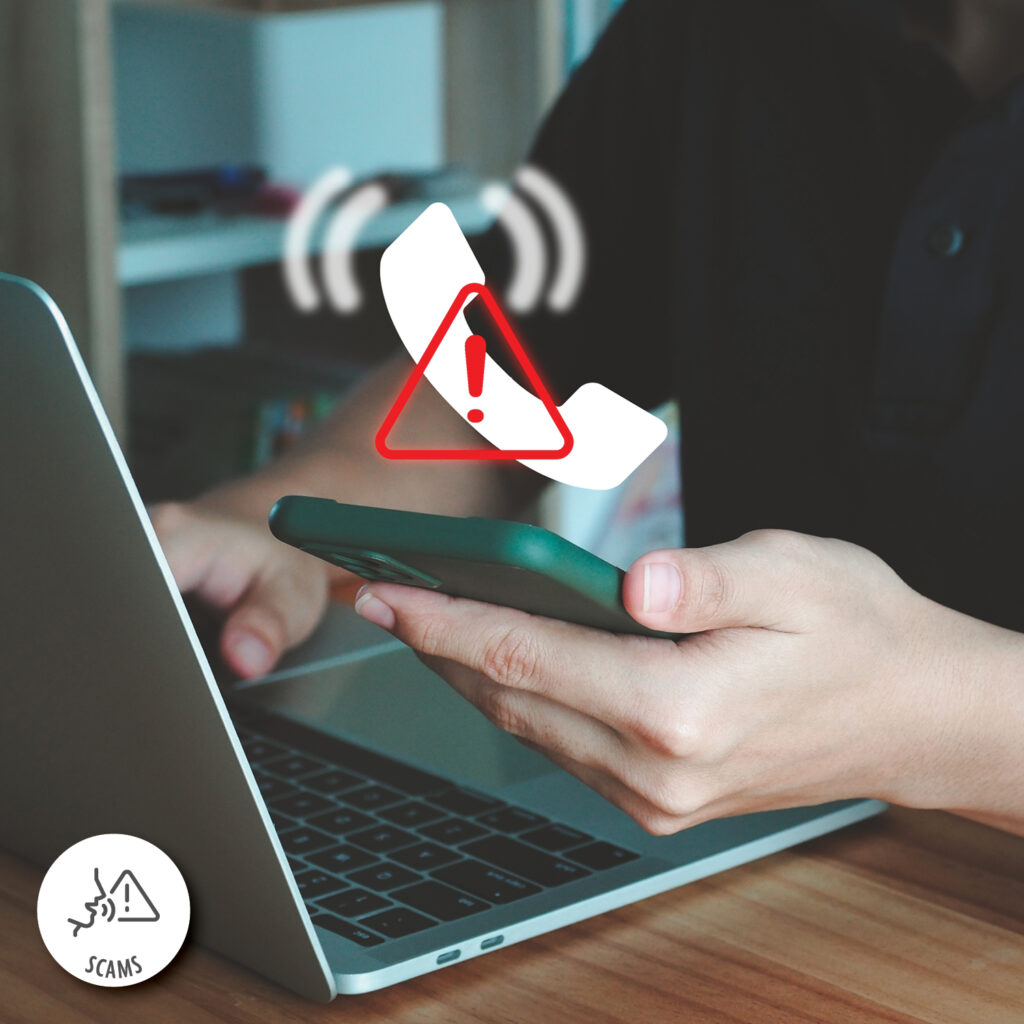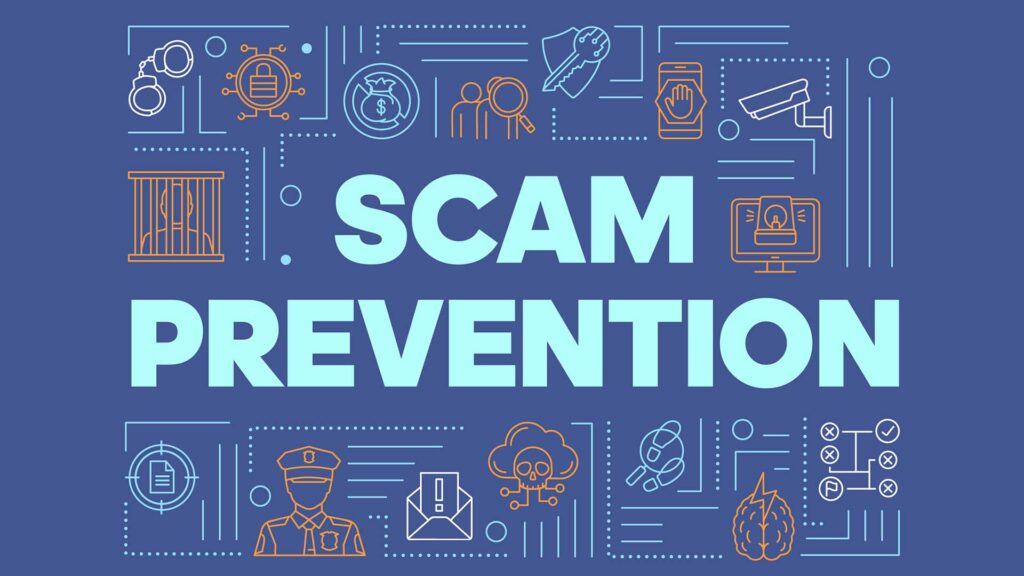Hello World
Don’t Get Caught in an Investment Scam!
Investment is rarely without risk. Nearly every investment option carries with it the possibility of loss. What many don’t realize though, is that in addition to the typical risks, investing also carries the danger of falling prey to an investment scam. Investment scams can include promises of high return for minimal investments that never materialize, scammers posing as financial planners and offering useless – even harmful – advice for a hefty fee, and illegal securities offered as IRA investments. However, the most common investment scam is the Ponzi scheme. Let’s take a closer look at this scam and how you can avoid falling victim. What is a Ponzi scheme? Named for the original pyramid scammer Charles Ponzi, a Ponzi scheme is simply a sophisticated way that scammers rob from Peter to pay Paul. The orchestrator of the scheme will promise high returns to investors, often through a fictitious investment opportunity or business venture. Instead of using investments to generate profit, though, the scammer uses these funds to pay returns to their earlier investors. This creates the illusion of a profitable enterprise. The scheme grows, with more investors joining, and the scammers at the top of the pyramid making the most money. Eventually, the entire house of cards comes toppling down, with investors losing significant amounts of money. How to spot a Ponzi scheme Look out for these key characteristics of a Ponzi scheme to ensure you don’t get caught: Protect yourself from Ponzi schemes Ponzi schemes are fairly common, but with a little bit of knowledge and awareness, you can protect yourself from falling victim. Here’s how to protect yourself from Ponzi schemes: If you’ve been targeted If you believe you’ve been targeted by a Ponzi scheme or investment fraud, report it to the appropriate authorities as soon as possible so they can do their part in apprehending the criminals. You can alert the Securities and Exchange Commission (SEC), the Financial Industry Regulatory Authority (FINRA) and the Federal Trade Commission (FTC) as well as your local law enforcement agencies. Ponzi schemes and other investment scams prey on the universal desire for easy money, but the only beneficiaries from these ruses are the scammers at the top of the pyramid. Stay alert, and stay safe!
Don’t Get Caught in an Emergency Scam!
It’s your grandson on the line and he’s in deep trouble! He’s telling you he’s been kidnapped for ransom, or perhaps he’s in trouble with the police and needs money for bail. Whatever the “emergency,” he’s asking you to wire money ASAP! You may already be calculating how much you can send, but pause for a moment, because you’re likely being scammed. Here’s what you need to know about emergency scams and how to protect yourself. How the scams play out In an emergency scam, a target receives a phone call, email or text message allegedly from a close relative. The caller claims to have been caught in hot water, which can be anything from a kidnapping, an issue with the police, a car accident or even getting stuck overseas with no money. Sometimes, the call will include another party, such as the “kidnappers” or “police officers” who are supposedly involved in the emergency. The caller will then ask the target to send over money as soon as possible using a wire transfer or prepaid debit card. They’ll also demand that this information not be shared with any other family members. They’ll claim to be embarrassed that they’ve gotten into this situation and ask that you honor their request to keep it quiet. While emergency scams are commonly played out with a grandparent of an alleged caller, they can also target parents, uncles, aunts, and siblings of the “caller”. They may even call posing as a friend or old neighbor of the target in an attempt to lure them into the scam. Unfortunately, if the target follows the directions of the caller and sends over money, these funds will go directly into the pockets of a scammer. How emergency scams lure victims If you’re reading the description of an emergency scam and thinking that no one could possibly fall for one of these ruses, think again. Scammers use several convincing methods to convince their targets that they are actually the callers they claim to be. First, the scammer will troll the target’s social media pages to learn their name, home address, job details, date of birth, and any other details about their life. Sometimes, they’ll hack the target’s email account to get this information. Next, scammers may pretend to be an “authority figure” who allegedly authenticates the caller’s story. They may pose as a lawyer, police officer, or even a doctor. Victims are often pulled into the scam when they hear an alleged authority figure on the call with their relative. Finally, some scammers go the extra mile by using AI to clone the “caller’s” voice. They simply scrape an audio clip they find on the internet and then use a voice-cloning program to make the emergency sound legitimate, even though it never happened. Red flags Here are some signs that can alert you to the possibility of an emergency scam: Protect yourself Follow these tips to keep yourself safe from emergency scams: Emergency scams play on the target’s emotions and assume they will act quickly to save their relative from a hairy situation. Stay calm and alert, and use the information here to avoid getting caught in an emergency scam.
All You Need to Know About Spoofing Scams
Scammers have been at their game since time immemorial, but modern technology has weaponized them in new and dangerous ways. In particular, spoofing has become more sophisticated and difficult to spot. Let’s take a look at spoofing, how it works, and red flags that can alert you to a possible spoofing scam What is spoofing? Spoofing is the criminal act of disguising a communication from an unknown source to appear as if it’s being sent from a trusted and known contact. The ultimate goal of spoofing is to get the target to share their sensitive information and/or their money with the scammer. For example, a spoofer may pretend to represent a victim’s credit card company and lead them into sharing their account details. Types of spoofing Cybercriminals have a variety of ways to pull off their spoofing. Here are the more common forms: In email spoofing, an attacker sends an email message appearing to be from a known or trusted source. The emails typically include links to harmful websites or attachments that will infect the victim’s device with malware. Alternatively, the scammer may use social engineering to persuade the recipient to share sensitive information. In IP spoofing, an attacker tries to gain access to a system by sending messages via a bogus or spoofed IP address, which appears to be from a recognized, trusted source, such as one on the same internal computer network. The spoofed IP address will mask the true source, which is a third party that is out to infect the victim’s device with malware and steal their information. Here, attackers make a phone call to a target that appears to be from a known caller. The scammer will often pose as the victim’s bank or credit union. The victim, believing they are speaking with a representative of their financial institution, will disclose their account information and even passwords, which can lead to the scammer emptying their accounts and/or stealing their identity. Sometimes, the scammer will provide the victim with a phone number to call, which will allegedly connect them with their bank or credit union. This number, of course, will only connect the victim to a scammer. 4. Facial spoofing In this most recent form of spoofing, a scammer uses a photo or video of a target’s face to simulate their facial biometrics. This enables them to unlock accounts that can only be opened via facial recognition. 5. Website spoofing In website spoofing, a scammer will create a bogus site that looks just like a reputable website that the victim often visits. Attackers will lure victims to this site for the purpose of stealing their login credentials and personal information. In this scam, also known as smishing, a victim will receive a text message on their personal device appearing to have been sent via a trusted source, such as the victim’s financial institution, place of work, or doctor’s office. The text will ask the victim to share personal information. They’ll often do so, mistakenly believing the sender of the text message to be who they claim to be. There are three players involved in MitM attacks: the victim, the party the victim is attempting to communicate with, and the “man in the middle”, otherwise known as the scammer who is intercepting the communications. In these spoofs, the scammer tries to eavesdrop on the interaction between the victim and the other party. Alternatively, they may try to impersonate the other party to get at the victim’s personal information. Deepfakes and spoofing Deepfakes is a relatively new and dangerous tool for spoofers. A deepfake is a fake image, video, or audio clip that has been edited to appear authentic. For example, a scammer may create a deepfake video using an image and audio recording of a celebrity and make it appear as if they are telling you to open a link or support a specific cause. Scammers use deepfakes to trap victims and appear as if they represent a trusted source. Protect yourself Spoofing is a formidable danger for consumers across the economic spectrum, but with the right tools and knowledge, you can avoid falling victim to these scams. Here’s how to protect yourself from a spoofing attack: Red flags Look out for these red flags that can alert you to a possible spoofing attack: If you’ve been targeted If you believe you’ve shared sensitive information with a scammer through a spoofing attack, there are steps you can take to mitigate the damage. First, contact your financial institution to let them know about the attack. You may place a credit alert or a credit freeze on your accounts, making it difficult or impossible for a scammer to open a line of credit or take out a loan in your name. If you believe your identity has been stolen, check out identitytheft.gov to learn what your next step should be. Finally, change the passwords on all your accounts to protect them from further attacks. Spoofing has gotten a lot more dangerous in recent years, but with proper awareness and basic protective measures, you can avoid getting scammed. Use the tips outlined here to stay safe.
6 Ways to Tell if a Website is Safe
In today’s digital age, where we rely on the internet for everything from furniture shopping to staying informed and entertained, safeguarding ourselves online is essential. The online landscape is filled with fraudsters using advanced techniques to exploit vulnerabilities. Accidentally stumbling upon an unsafe website can expose you to malware, including spyware that steals sensitive financial data and ransomware that locks your device and demands payment for its release. These threats can lead to devastating consequences such as drained bank accounts, fraudulent loans taken out in your name, and even identity theft. It’s crucial to stay vigilant and take proactive measures to protect yourself from online scams and threats. Fortunately, with the right steps and protective measures, you can easily avoid unsafe websites. Here are six ways to tell if a website is safe and secure. Secure websites like ours will have an SSL, or a Secure Sockets Layer. An SSL is a digital certificate that verifies a website is authentic and will automatically encrypt all personal information and financial data. There are two primary indicators of an SSL, both of which are easily visible in the site’s URL that’s displayed in your web browser: It’s important to note that most browsers will hide the beginning of the URL, which generally includes these two indicators of an SSL. However, you can easily read the entire URL by copying and pasting it to another tab, a Microsoft Word document or a Google Drive doc. Some browsers will also reveal this info if you hover over the left-hand side of the URL. In addition, clicking on the padlock icon will reveal more information about the site’s security. Next, look at the URL carefully. Are there any misspelled words? Does the URL mimic a well-known site or retailer? Scammers will often lure victims by creating bogus sites that look like they represent well-known companies. However, careful scrutiny of the URL will reveal basic spelling errors that give the scam away. You may also find that the site, which allegedly represents a famous company, belongs to a public domain, such as Gmail or Yahoo, as opposed to a private business domain, like Amazon.com. This, too, will tell you that you’re likely looking at a scam. Legitimate companies are eager to have you connect with them for any reason. They’ll generally display their contact information on their home page or provide a link through which to easily access it. Scammers, on the other hand, try to keep themselves as invisible as possible. You likely won’t find any tabs that say “Contact Us” or “About Us” on their website. You may find their email address on their site, but a phone number and street address will be glaringly absent or clearly made up. Authentic companies will take the necessary steps to make a professional impression on visitors to their website. Scammers, on the other hand, will not. Use their carelessness to your advantage by looking out for spelling mistakes and typos throughout the site. You can also be on the lookout for cheap design elements, including images that are clearly not original and logos that are poorly created. Each of these clues can signify a scammy website. If you enter a site’s URL into your computer and a warning pops up to alert you that the site you’re attempting to access is not safe, do not ignore it. You can choose to advance to this site, or back out. Unless you’re absolutely sure the site is secure despite the warning, it’s best not to choose to advance to the site. Websites that are flagged by devices generally do not pass the most basic security tests as detailed above. Scammy websites will try to trick you into downloading malware through pop-ups and embedded links. Sometimes, the links will be used to generate ad revenue through clicks. Whatever the intent, it’s important to know that reputable sites will not flood your screen with pop-ups and random links for you to click. If you encounter a site like this, you’re likely looking at a scam and should exit as soon as possible. Then, close your browser and have your security system run a scan on your device to find any possible vulnerabilities or safety breaches. Don’t get stuck on an unsafe site! Use the tips here to stay safe.
8 Financially Responsible Ways to Use Your Tax Refund
It’s tax refund season! How are you going to be spending the pile of cash from Uncle Sam?
Of course, you can use some of your tax refund to indulge responsibly. If you’ve been wanting to buy yourself a new something special for a while or to spend on an experience you generally cannot afford, by all means, you can allow yourself to use some of your tax refund for your chosen treat. Indulging occasionally and mindfully can prevent feelings of deprivation and can help you manage your money better
However, before you go out and blow your entire refund on a sinfully expensive weekend, take a step back and try to determine the most financially responsible approach you can take with this money. Instead of spending all the funds on short-term indulgences, consider using some of them to improve your overall financial wellness. To help you get started, we’ve compiled this list of eight financially responsible ways to use your tax refund this year.
Build or boost your emergency fund
Having a well-endowed emergency fund is a crucial component to your financial health and stability. If you don’t have a fund with three to six months’ worth of living expenses set aside to cover unexpected events, work on setting one up now. Use some of your tax refund to start building your emergency fund or boost an existing one.
Pay down high-interest debt
High-interest debt can kill the best of budgets. If you’re carrying outstanding debt with high-interest charges, consider using some of your tax refund to start paying it down. Decreasing your debt amount means more of your monthly payments will go toward your principal instead of interest. Additionally, knocking off a big chunk of your debt can potentially help you move to a lower interest rate.
Invest in your education
If you’ve been looking for a way to advance your career and increase your earning potential, this may be your chance. Consider furthering your professional education by allocating some of your tax refund to career workshops, conferences, or additional certifications. Enhancing your qualifications and learning new skills can be the key to significant raises or a promotion at work, which will pay off for years to come.
Feed your savings
It’s always an opportune moment to enhance your savings, especially during tax refund season! Remember, the SRIFCU Core Savings Account currently offers an attractive 4.25% APY on the first $5,000 deposited. Utilize this advantageous rate to bolster your long-term savings and inch closer to your financial objectives. Did you know? The IRS permits you to divide your refund into three distinct accounts via direct deposit, facilitating this process. Consider allocating a portion of your refund directly into a savings account even before it reaches your hands.
Prepay your mortgage
Making an extra mortgage payment or two can be a fabulous way to free up some money for the long term. Reducing the principal can have an exponential effect on your loan since so much of it goes toward interest over the life of the loan.
Make home improvements
Spending some, or even all, of your tax refund on improvements that increase the value of your home is an investment in your equity. In particular, kitchen facelifts and home expansions tend to offer a larger return on investment when the home is sold.
Another kind of home improvement to consider at this time is an energy enhancement. For example, you can swap out older appliances for newer and more energy-efficient models or even choose to have solar panels installed on your roof. Energy improvements will save you money each and every month.
Start or contribute to a college fund
If you have children or plan to start a family in the future, consider allocating a portion of your tax refund to a college savings fund. A 529 savings plan, which is a tax-advantaged account specifically designed for education expenses, can help alleviate the financial burden of college in the future. Contributions to a 529 plan may be deductible on your state taxes, and earnings are tax-free when used for qualified education expenses.
Invest in your retirement
If you qualify, contemplate directing a portion of your tax refund toward your employer-sponsored 401(k) or an Individual Retirement Account (IRA). These contributions not only offer potential tax advantages but also leverage the power of compounding, enabling your money to multiply over time. Initiating your retirement investments early can significantly enhance your potential accumulation for the golden years ahead. Additionally, keep in mind that SRIFCU IRA CDs offer attractive rates, with APYs reaching as high as 4.75%, further boosting your savings potential.
There are so many things you can do with your tax refund that can benefit your financial health. Use our list for some fabulous ideas or come up with your own financially responsible ways to use your tax refund.
APY= Annual Percentage Rate
8 Valentine’s Day Hacks
Celebrate the significant other in your life without breaking the budget by using these hacks!
1. Dine In
Restaurants sometimes up their prices when the whole world is going out to eat, so you’ll likely be paying extra just because it’s Valentine’s Day. Instead of shelling out big bucks, cook up a gourmet meal at home. Don’t forget to set the ambiance with candlelight and soft music!
2. Explore the great outdoors
It may be cold out, but you can still spend some shared time together outdoors. Bundle up and take a refreshing walk under the stars. Watch the waves crash onto the shore at a beach. If it’s snowy out, let your inner child free and build a snowman together.
3. Laugh it out
Check out the local comedy club together for a rollicking good time that can cost as little as $5 each.
4. Hit the gym
Gym memberships and day passes usually decline in February when many people have abandoned their New Year’s resolutions to get fit. A shared workout can be a great bonding experience that’s good for your health and your wallet, too.
5. Make a memory box
Instead of expensive gifts, take a walk down memory lane together by making a memory box. Cover a small container in decorative material, or spray-paint it in your chosen color. Then throw in mementos you have saved up from your months or years of dating.
Grab a tub of ice cream and enjoy a wonderful evening reliving some of your best shared moments.
6. Get cultured
Give your dating life a refreshing twist by visiting a local museum! Choose a place with displays that appeal to each of your interests. Studying works of art or historical artifacts makes for fabulous conversation.
7. Gift them with a gesture
Everyone has a guilty pleasure they can’t get enough of. Give your partner an all-out indulgence fest this Valentine’s Day for a truly thoughtful gift. If your significant other loves waking up to a huge stack of pancakes, surprise them with their dream breakfast-in-bed. If they have a thing for Snicker bars, fill a huge, funky container with their favorite chocolates.
You can also offer to do a household chore you know your partner loathes, like doing laundry. Decorate a small piece of cardstock and write up a “certificate” that gifts the recipient with four loads of laundry, washed, dried and put away. It won’t cost you anything, and it’s sure to put a smile on your partner’s face!
8. Movie matinee
Instead of paying full price for movie tickets, see your favorite picture at a daytime matinee. You’ll save a bundle on tickets just by going a bit earlier in the day. Theaters are also less crowded during the afternoon, making for a more enjoyable experience all around.
Give Yourself the Gift of Financial Flexibility this Holiday Season with SRI Federal Credit Union’s Skip-a-Pay Program!
Are you looking to make this holiday season truly magical? At SRI Federal Credit Union, we’re here to make your dreams come true! Our exclusive Skip-a-Pay program – the perfect gift for your wallet this holiday season. It’s the season of giving, and we want to give back to our valued members by offering you a little extra financial breathing room. The Gift of Financial Freedom Unwrap the Joy of Financial Relief: Imagine having extra funds during the holidays to cover gift shopping, festive feasts, or even that winter getaway you’ve been dreaming of! With our Skip-a-Pay program, you can skip a payment on your eligible loan this season without any upfront cost. How It Works: When you choose to skip a payment, you’ll enjoy a month of financial freedom while still celebrating the holidays in style. The best part? Skipping a payment won’t cost you a dime. There’s no need to worry about additional fees or hidden charges. Benefits of Skip-a-Pay: Help Your Cash Flow: Keep extra money in your pocket this holiday season. Easy Eligibility: Just meet a few simple criteria to qualify. Stress-Free Process: No complicated paperwork or hoops to jump through. 🎁 Eligibility Requirements: 🎁 To be eligible for SRI Federal Credit Union’s Skip-a-Pay program, all you need to do is meet the following simple criteria: No Recent Skip-a-Pay: You must not have used the Skip-a-Pay option in the last six months. Current Loan: Your loan must be up-to-date and in good standing with us. Member in Good Standing: Maintain a positive relationship with your credit union. Experience the Holidays with Peace of Mind At SRI Federal Credit Union, we understand that the holidays can be a stressful time for your finances. Our Skip-a-Pay program is designed to bring you the joy of the season while ensuring your cash flow remains healthy. While interest may continue to accrue, you can breathe easy knowing you have more flexibility during this special time of year. The Gift That Keeps on Giving: Secure your financial peace of mind this holiday season. Skip-a-Pay allows you to cherish the moment without worrying about a tight budget. Click HERE to Apply Today! Don’t let financial stress steal the joy of the holidays. Take advantage of SRI Federal Credit Union’s Skip-a-Pay program to put a smile on your face and a little extra jingle in your pocket. Give yourself the gift of financial flexibility. Contact us today to learn more about our Skip-a-Pay program. Make this holiday season unforgettable with SRI Federal Credit Union. 🎄 Happy Holidays from SRI Federal Credit Union! 🎄
Don’t Let The P2P Scams In The Door
P2P platforms, like Zelle, Venmo and PayPal, have made life so much easier for many consumers. Paying your friend back for the $20 you borrowed while at the mall, splitting a meal and purchasing a shared gift are now as easy as a few quick screen swipes. Unfortunately, though, P2P scams are rampant and varied. Also, once money is transferred through a P2P service, it’s usually gone for good.
Here are six P2P scams to beware of:
Mystery money
In this P2P scam, a stranger “accidentally” sends the target money and then reaches out to them, asking for their money back. The target will see these funds in their P2P account and willingly return the funds. Unfortunately, though, because this money was added to the target’s account using a stolen credit card or checking account, the platform will ultimately flag the transaction as fraud and remove the funds. If the victim already forwarded the funds to the scammer, the platform will hold them accountable for the funds and potentially block their account.
Hidden credit card fraud
In this P2P scam, a fraudster will purchase an item listed on Craigslist or a similar site using a P2P service. They’ll pick up the item, or have it shipped to their home, and they’ll never be heard from again. Meanwhile, the P2P platform will eventually recognize that the funds for the purchase were fraudulently sourced, and will take the money back from the seller. The victim will be left without the item – and have no money to show for it.
Fake customer representative
Customer rep scams are an old story, but their appearance in the P2P world is only as old as these payment platforms. In this scam, a target experiencing difficulty with a transaction on a P2P platform inquires about assistance on social media. A scammer sees that inquiry, and then reaches out to the target, claiming to represent the platform and offering their assistance. If the target falls for the ploy, they’ll be directed to a bogus support site where they’ll be asked to enter their account details or credit card info. This, of course, leaves them open to identity theft and financial loss.
Utility scams
Utility scams pulled off via P2P platforms follow the same script as the classic scam in which an alleged rep from a utility company reaches out to a target, claiming their service will be shut off unless a payment is immediately made. In this variation, the scammer insists on payment via a P2P service. Unfortunately, once the payment is made to this “service rep,” it can be impossible to reclaim the funds.
Password scam
In this P2P scam, an alleged representative of a credit union or bank will reach out to a target via text, asking if they approve a recent large P2P transfer from their account. The target will respond with a quick “no.” Next, the scammer will call the victim, again posing as a rep of their financial institution, and offer to assist them in reclaiming the allegedly frauded money. To do so, the scammer claims, the victim will need to share their Zelle login credentials. Unfortunately, if the victim shares the one-time passcode, the scammer will have the info they need to change the password and access the victim’s Zelle account. The scammer can now send themselves money through the victim’s Zelle account.
Bogus receipts
In this variety of a P2P scam, a scammer will insert themselves into a legitimate P2P transaction by digitally manipulating a screenshot to make it appear as if they have completed a part of an ongoing deal and insisting that you now owe them money. In truth, though, the transaction was never completed and, if you send the money, you’ll be sending it directly to a scammer’s P2P account.
Stay safe
Follow these rules when using P2P platforms:
- Only send and accept funds from people you personally know and trust.
- Always confirm that you’re interacting with the correct person by verifying their phone number at every stage of the P2P transaction process.
- Call the P2P platform’s customer service number directly to resolve errors. Similarly, reach out to SRI Federal Credit Union directly if you receive notification of an allegedly frauded account.
- After completing a P2P transaction, check your checking account to confirm you’ve actually received the promised funds.
- P2P services are enormously convenient, but each transaction carries the risk of fraud. Use the tips outlined here to stay safe from P2P scams.
Navigating Government Shutdowns: Introducing SRI Federal Credit Union’s Assistance Loan
At SRI Federal Credit Union, we recognize that government shutdowns can bring unforeseen financial challenges that impact the lives of hardworking government employees. In times like these, we believe that support should be readily available, and that’s why we’re introducing our Government Shutdown Assistance Loan.
Our Government Shutdown Assistance Loan is designed to provide relief when you need it most. With loan limits based on your gross pay, you can access up to $5,000 to help bridge the financial gap caused by a government shutdown. Whether it’s unexpected bills, essential expenses, or simply peace of mind, this loan is here to assist you.
Flexible Term, Competitive Rate
We understand the importance of flexibility during challenging times. That’s why we offer a 18-month term, giving you the time you need to regain financial stability without the stress of a short repayment period. What’s more, our loan features a highly competitive interest rate of just 4.99%, making it an affordable solution to your financial needs.
Special Benefit: Interest-Free Repayment
We appreciate your commitment and hard work, and we want to make your recovery as smooth as possible. If you manage to pay off your Government Shutdown Assistance Loan in full within 60 days of your return to work date, we’ve got a special benefit for you: no interest will be charged. It’s our way of giving you a helping hand as you get back on your feet.
Exclusive to Government Employees
To qualify for this program, you must be a government employee. We’re here to support those who serve our nation, ensuring that you have access to the financial assistance you deserve when faced with the unexpected.
At SRI Federal Credit Union, our commitment to our members extends beyond everyday banking. We’re here to stand with you during the most challenging moments, offering tailored financial solutions that make a difference in your life.
For more information about our Government Shutdown Assistance Loan please reach out to our dedicated lending team. To apply click HERE. We’re here to support you every step of the way.
Protecting Your Finances: How to Prevent Fraud in Your Credit Union Accounts
Hey there, savvy money manager! We’re living in an era where our wallets have gone digital, making it super convenient to handle our finances. But you know what else is on the rise? Yep, you guessed it – sneaky fraudsters and cyber tricksters. They’re eyeing your credit union and bank accounts, access to online banking and more. No worries, though! We’ve got your back with tips to help you keep your hard-earned cash safe and sound.
1. Be a Password Picasso:
Time to ditch those “123456” passwords, folks. Cook up something unique for each account – a mix of caps, numbers, and symbols. Let’s make those passwords as tough to crack as your grandma’s secret cookie recipe! And hey, while you’re at it, sprinkle in some two-factor authentication for that extra layer of security.
2. Play Account Detective:
Make it a habit to give your credit union statements, online banking moves, and HELOC transactions the eagle eye treatment. If anything looks fishy, call it out! Set up alerts to ping your radar whenever there’s a big change in your accounts – that’s your cue to go all Sherlock Holmes.
3. Keep Things Updated:
You know those software updates that pop up on your screen? Don’t swipe them away like last year’s fashion trends. They’re your secret weapon against sneaky hackers. Stay up-to-date on your devices, and those virtual bad guys will have a harder time knocking on your digital door.
4. Side-Eye Those Emails and phone calls:
Phishing is like the oldest trick in the book. These scammers send emails that look legit but aren’t. If an email asks for your personal info, like passwords or account numbers, don’t fall for it! Beware the crafty tactics of fraudsters who can spoof the phone numbers of your trusted financial institutions. These tricksters might call you, appearing to be your bank, credit union, or a retailer like Amazon, but don’t be fooled! Remember, authentic financial institutions will never ask you for verification codes or sensitive login information over the phone and retailers like Amazon will never transfer you over to your financial institution’s fraud department. If anyone does, it’s a major red flag. Stay savvy and keep your guard up against these shrewd scams to ensure your hard-earned money remains safe and secure. Remember, your financial intuition will never slide into your inbox or call you asking for a verification code to snoop around your account.
5. Safe Networks Only:
Picture this: you, sipping coffee at a cafe, handling your online banking on their free Wi-Fi. Now hit pause – that’s a prime-time spot for hackers to swoop in. Stick to secure networks for your money matters. Public Wi-Fi might be free, but the cost of compromised info is way too high.
6. Hide Your Docs:
Got important papers lying around? Lock them up like treasure! Keep physical copies of your bank docs, loan agreements, and IDs in a safe spot. For digital files, it’s all about the encryption. Password-protect those babies and keep them hidden from prying virtual eyes.
7. School Yourself:
Knowledge is power, folks! Your credit union and bank have your back with resources to school you on the latest fraud moves. Stay in the loop and read up – it’s like giving your brain a superhero cape against cyber baddies.
8. Sneak a Peek at Your Credit:
Peeping into your credit report isn’t just fun – it’s smart. Scan for anything odd. Did someone open a credit card in your name? Nope, not on your watch! Grab your free yearly credit reports and give ’em a good old once-over.
9. Be the Limit Setter:
Ever heard of setting transaction limits? It’s like locking your financial doors. Check if your credit union or bank lets you do this. If a scammer tries to hit you with a huge transaction, they’ll hit a brick wall instead.
10. Report, Report, Report:
Remember this golden rule: if you see something funky, say something! If anything smells off in your accounts, call your financial intuition right away. And remember, they’ll never text you for a verification code to hop into your account – that’s like giving a stranger your house keys.
There you have it, money maestro! With these easy-peasy steps, you’re arming yourself against the tricksters of the digital realm. So keep those passwords strong, your eyes sharp, and your financial instincts on point. Your money deserves nothing less than Fort Knox-level protection!
Contact Us
Call: 650.800.5434
Fax: 650.326.8916
333 Ravenswood Ave
Menlo Park, CA 94025-3493
Mailing Address:
P.O. Box 2284
Menlo Park, CA 94026-2284
Routing Number: 321173328
All deposits are insured by the NCUA to at least $250,000.














